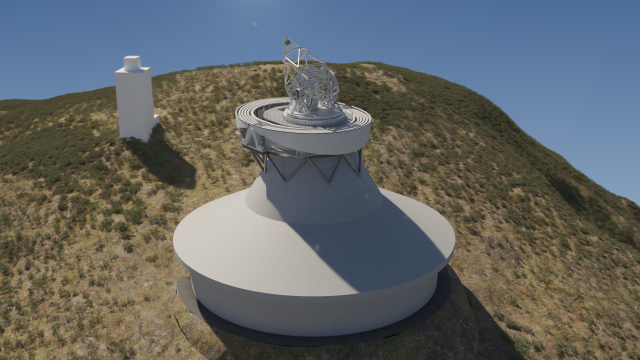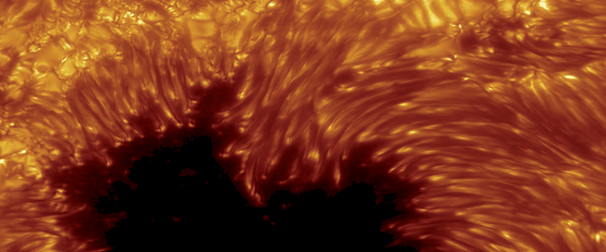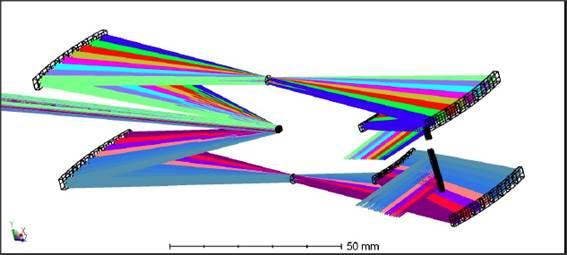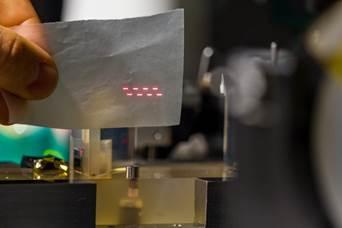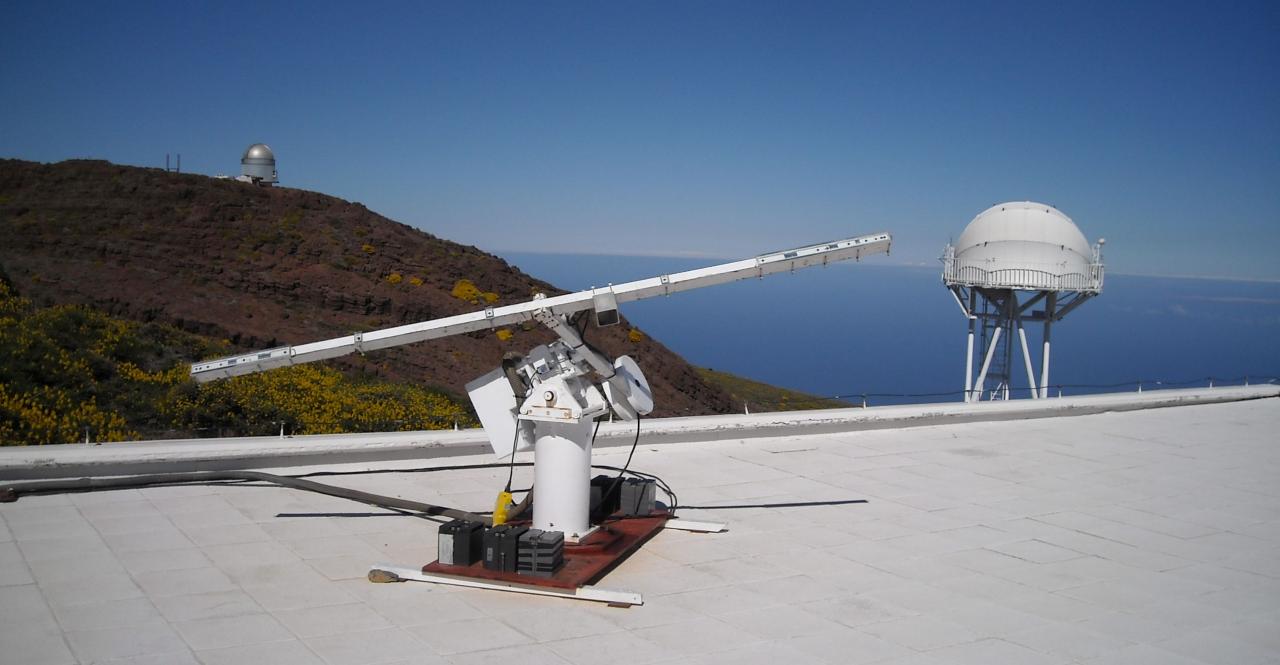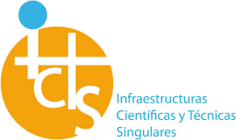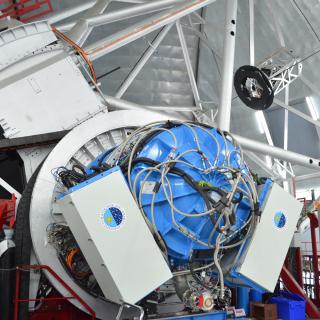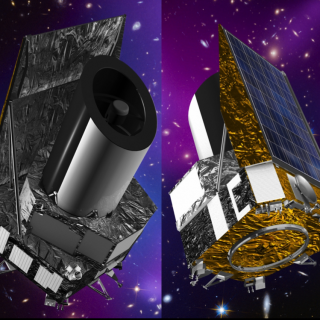Related grants:
General
EST: INSIDE-EST, SOLARNET, EST PROJECT OFFICE, PRE-EST, MICAL, GREST, SOLARNET, EST-DS
European Solar Telescope (EST)
The European Solar Telescope is promoted by the European Association for Solar Telescopes (EAST), a consortium with the aim, among others, of undertaking the development of the telescope, to keep Europe in the frontier of Solar Physics. More than 30 institutions from 18 countries participate under the superivision of the IAC and is the largest planned European infrastructure in the field of terrestrial solar physics, with a construction cost of approximately 200 million euros. By unanimous agreement the Canarian Observatories are deemed the ideal location for the EST.
Associated projects
| Name | URL of the project |
| INSIDE-EST | - |
| SOLARNET (H2020) | https://est-east.eu/solarnet-h2020 |
| EST PROJECT OFFICE | - |
| PRE-EST | http://est-east.eu/est/index.php/pre-phase |
| MICAL | https://www.iac.es/en/transparency/economic-information/grants/mical-strategic-improvements-scientific-technological-infrastructures-and |
| GREST | http://est-east.eu/est/index.php/grest |
| SOLARNET (FP7) | https://est-east.eu/solarnet-fp7 |
| EST-DS (Design Study) | https://est-east.eu/design-study |
As stated in ASTRONET, the EST is a top priority instrument for the future of this discipline in Europe. Likewise, it is considered a top priority within the Intelligent Specialization Strategy for the Canary Islands (RIS3, 2014-2020). An exhaustive study as also been undertaken concerning the socio-economic impact related to its construction and operation.
This European consortium, closely involved in the design and development phase of the EST, has collaborated to the full in the integrated infrastructures initiative called SOLARNET, a project coordinated by the IAC in which 30 European entities from 15 countries, together with another two from the United States, have participated. SOLARNET has allowed greater coordination and integration of European solar physics to be achieved; at a recent meeting of the European Association of Solar Telescopes, in which the main results of activities pursued until the end of March 2017, this collaboration was hailed as a great success. Equally important is the European technological and strategic project GREST-Getting Ready for EST, of three years' duration with a consortium of 13 members from six European countries, and the participation of three companies. The main objective of GREST, which will be concluded in May 2018, is to boost current state-of-the-art technology in relation to future EST instrumentation.
Given the inclusion of the EST in the latest update of the ESFRI road map, which includes the all top priority facilities at European level for the coming decade, now is the time to initiate the preparatory phase by setting up the Project Office. Doing this will consolidate the design of all the subsystems of the telescope and enable us to be properly prepared for the construction phase. Likewise, with prioritization established, the project will be in a position to consolidate short-term financial contributions by the partners. The Spanish Government, through the Secretary of State for Research, Development, and Innovation, has already stated Spain's support and commitment to making a decisive contribution towards the construction of the EST.
With a view to maintaining scientific and technological leadership, together with the well-merited industrial and economic returns, and guaranteeing the necessary continuity of this large project, an application has been made by our regional authorities for the provision of 4,540,000 € over the period 2017-2021 for the creation of the EST Project Office. This budget will enable the formation of a working group to explore and consolidate the telescope design and adequately plan for the construction phase.
The EST will require around 200 million euros for its construction (six years), together with 10 million euros annually for its running over a period of 30 years.
Detailed analysis of currently available data enables us to calculate economic returns related to this project for the Canary Islands; these amount to some 54 million euros during the construction phase and about 364 million euros during the 30 years of operation of the telescope (including the induced effect on the regional economy). With regard to the effect on employment, again including the said induced effect, around 10,565 new jobs of one-year duration would be generated in the Canary Islands (taking into account both the construction period, 2021-2027, and the period of operation – approximately 30 years). These positions would be equivalent to 213 full-time posts during the six years of construction and to 309 full-time posts during the 30 years of operation.
During the preparatory phase there will be various benefits would accrue to the Canary Islands. On the one hand there would be a boost to the development of IACTEC, a technological cooperation venture of the IAC with the productive and innovative sector that will maximize the technological and industrial return, and contribute towards the generation of a business environment in the islands to compete in high-level technology. The group of engineers who will undertake the design of this world-class telescope will form an integral part of it. The internal collaborations that will be established with other groups within IACTEC will allow the fluid and efficient exchange of experience and knowledge that will be of great use for projects in other areas. Moreover, this team will establish contacts with the most advanced European technology firms specializing in diverse areas of technology (mechanics, optics, advanced mechanisms, instruments, optical and electronic control systems in real time, etc.). The link with these firms will be most evident in the construction phase, when all these companies assign qualified personnel to the islands to collaborate at various levels with local personnel, with the consequent return for the Canary Islands.
The EST represents not only a major scientific infrastructure for the Spanish solar physics community but also an important motor of development to boost the Spanish economy, with the concomitant entrepreneurial growth in the realm of high added value technological activity at both national and autonomous level.
Ubication
The European Solar Telescope will be located at the Roque de los Muchachos Observatory in the area of the Dutch Open Telescope (DOT), near the Swedish Solar Telescope (SST).
Eurpoean Solar Telescope (EST) location with the Swedish Solar Tower (SST)
More information: https://est-east.eu/component/content/article/14-english/news/1067-est-location-at-roque-de-los-muchachos-observatory-approved?Itemid=659
Scientific and/or technological goals
One of the main scientific challenges facing solar physics today is understanding the processes that generate and concentrate energy in the lowest part of the the photosphere, from which the visible light reaching the Earth from the Sun originates. Observing this region of the solar atmosphere requires both a high level of scientific insight and advanced instrumentation. Although present-day solar telescopes have greater spatial resolution than their predecessors, they still have not achieved the necessary degree of resolution – a few tens of kilometres on the solar surface – to be able to 'see' the fundamental processes that give rise to these magnetic phenomena.
In this regard, telescope aperture, which determines resolving power, is particularly important. Jointly with spatial resolution, most crucial for solar physical research is light grasp; both factors have been taken into account in the design of the EST. In the conceptual design phase (EST-DS project), the project identified as essential features a primary mirror diameter of 4 metres and three kinds of instruments with various channels for observing at different wavelengths simultaneously, all with the aim of establishing the greatest possible angular resolution and excellent polarimetric rendition as essential scientific specifications for the telescope. At the same time, various key aspects were defined for the telescope as a whole. These include opto-mechanics, essential mechanisms for cooling, adaptive optics, instrumentation and control. At the same time different alternatives such as are used in today's best solar telescopes were analysed in order to compare them with all the most important EST systems and subsystems so as to ascertain the optimum combination for the large European solar telescope. To achieve these objectives the EST will specialize in high spatial and temporal resolution through the use of various instruments capable of efficiently producing the two-dimensional spectral information required for this purpose. In this way the telescope will be able operate various instruments in its focal plane simultaneously, which will enable researchers to study both the magnetic connection between the solar magnetic field through the solar atmosphere and the interaction of this magnetic field with plasma in motion.
These tasks will be complemented with other infrastructures under development such as the new American Daniel K. Inouye Solar Telescope (DKIST), also 4 metres in diameter, which has been under construction since the end of 2012 on Hawaii and will result in a major scientific return for the global research community.
Image of a sunspot in visible light obtained with the 1 m Swedish Solar Telescope at Roque de los Muchachos Observatory. Courtesy of the Royal Swedish Academy of Sciences.
Furthermore, being located almost antipodally with respect to the Hawaiian telescope, the EST and its US counterpart will be able to carry out virtually uninterrupted observing campaigns of comparable quality and resolution. This is of capital importance when investigating the emergence and disappearance of the magnetic field in the solar atmosphere, and will assuredly produce revolutionary discoveries in this area.
The European Solar Telescope will mark a giant step forward in terms of observing capacity that will enable us to tackle new and ambitious scientific goals.
As part of the work of the project on the solar magnetic field, the EST will be able to study how this field aids the transport of energy between the photosphere and chromosphere, how the energy gets deposited into this latter layer of the solar atmosphere, and will attempt to explain why the chromosphere is hot. Given these important aspects of the project, the EST will concentrate above all on solar polarimetry at very high spatial resolution.
The importance of this work in terms of the global aims of the EST is hard to ignore. The spatial and temporal scales characterizing physical processes in the solar atmosphere are often determined by the omnipresent magnetic field and are typically so small as to complicate their study, particularly given the dearth of photons. That is why building a telescope like this one with a large collecting area is vital for improving our understanding of solar magnetized plasma physics. Then there is the planetary and astrophysical connection to be considered since the Sun directly influences all the planets, and many parallels can be deduced between the processes taking place in the solar atmosphere and those that occur in planetary magnetospheres, including the Earth's.
Our star can be viewed in many ways as a kind of fundamental physics laboratory: it is the only place where the interaction between plasma and the magnetic field can be studied in detail, and its tremendous size implies that the magnetic diffusion times are very long, which allows us to follow the evolution of this interaction in a way that it would be impossible to reproduce in the laboratory.
All this requires a highly sophisticated telescope, and with an EST committed to the limit of scientific and technological development, researchers be aware that its observational capabilities can always be improved, thereby allowing solar physicists to carry out studies at the limits of our knowledge.
Needless to say, all this work has very real practical applications. Here are two examples. First, solar flares can accelerate plasma at velocities of many thousands of kilometres per second, such that, when the plasma hits the Earth's magnetosphere, not only are beautiful polar aurorae created but satellites may also be damaged, electric power grids collapsed, and air passengers exposed to increased levels of radiation. Second, the question of how short- and medium-term changes in solar irradiance affect the climate of our planet is equally important when providing reliable climate predictions. To counteract these effects from solar storms and study the effects of the Sun on climate it is fundamental to carry out detailed investigations of solar processes such as those that are planned with the EST.
SOLARNET (H2020)
PI: Manuel Collados Vera
Manager: Alberto Escobar
Participating: Andrés Asensio, Luzma Montoya, Carlos Domínguez, Alvaro Pérez, Silvia Regalado, Haresh Chulani, Jorge Sánchez, Roberto López, Mary Barreto, Luis F. Rodríguez, Marcos Reyes
Status: In progress
The project aims at integrating the major European infrastructures in the field of high-resolution solar physics. SOLARNET involves all pertinent European research institutions, infrastructures, and data repositories. Together, these represent first-class facilities.
Project website: https://est-east.eu/index.php/solarnet-h2020
SOLARNET involves all pertinent European research institutions, infrastructures, and data repositories in the field of high-resolution solar physics with the aim of integrating them and carrying on the following actions: (i) realise transnational access to all European users; (ii) integrate small communities and foster European collaboration; (ii) enhance and spread data acquisition and processing expertise to the Europe-wide community; (iii) increase the impact of high-resolution data by offering science-ready data and facilitating their retrieval and usage; (iv) encourage combination of space and ground-based data by providing unified access to pertinent data repositories; (v) foster synergies between observational and theoretical research communities by organising meetings where each presents state-of-the-art methodologies; (vi) train a new generation through student schools, a mobility program, and grant program to attend conferences; (vii) develop innovative post-focus instrumentation; (viii) develop and build next generation devices to correct for atmospheric turbulence; (ix) lay foundations for combined use of synoptic and high-resolution facilities on ground and in space (x) dissemination activities towards society. The project involves all pertinent European research institutions, infrastructures, and data repositories. Together, these represent first-class facilities. The additional participation by private companies and non-European research institutions maximizes the impact on the world-wide scale. In particular, the project achievements will be of principal importance in defining the exploitation of the future 4-meter European Solar Telescope.
Further information: www.est-east.eu
PREP-EST
Constructive Preparatory Phase of the European Solar Telescope (EST) - Creation of the Project Office (PREP-EST)
PI: Manuel Collados Vera
Technical director: Mary Barreto
System Engineer: Miguel Núñez
Manager: Alberto Escobar
Participating: Jorge Sánchez, Juan Cozar, Irene Ferro, Sebastián Hidalgo, Mariluz Sánchez, Luzma Montoya, Haresh Chukani, Carlos Domínguez, Alejandro Soler, Angel Mato, Nauzet Vega, Noelia Feijóo, Lin Qiang Zhang, Yolanda Martín, Horacio Rodríguez, Noé Rodríguez, Txinto Vaz, Jorge Quintero, Yanira Carballo, David Jiménez, Carlos Quintero, Francisco González
Status: In progress
Figure: EST Preliminary Design. (Credit: IAC)
PREP-EST is a project funded by the Canary Islands Government under a direct grant awarded on grounds of public interest.
The objective of PREP-EST is the realization of the preliminary design of systems and subsystems of the telescope to a sufficient level that allows starting the detailed design stage and, in a next phase, the beginning of the construction of the EST in compliance with its scientific requirements. These tasks will take into account the conceptual design study (DS-EST), and also the main results achieved in SOLARNET, GREST and in the project in progress PRE-EST.
To achieve that goal, the following phases are being carrying on:
- Consolidation of the conceptual design resulting from the previous stage of design study
- Definition of subsystem specifications for the preliminary design
- Preliminary design
- Definition of specifications for detail design and manufacturing, including cost estimation and execution program.
It was created a group to carry out the preliminary design program: the EST Project Office, which has the mission of the scientific and technical coordination of the design at the system level (systems engineering), the preparation of specifications, contracting and supervision of contracts for the preliminary design of subsystems that require greater industrial participation (with additional funds contributed by the other partners and the EC).
Upon completion of the preliminary design of the system and subsystems of the telescope, the EST Project Office will define the specifications for the subsequent detailed design and manufacturing, including cost estimation and execution program.
PRE-EST
PI: Manuel Collados Vera
Manager: Alejandra Martín
Participating: Anselmo Sosa
Collaborator: Antonio Maudes
Status: Completed
The EST is a revolutionary project of Europe-wide dimensions for the design and building of a 4 metre class solar telescope to be located at the Canarian Observatories. This development is promoted by the European Association for Solar Telescopes (EAST), a consortium of research centres from 18 European countries, one of whose aims is the development of the telescope in order to keep Europe's leading position in solar physics.
Project web: https://est-east.eu/preparatory-phase
In April 2017 the European project H2020 was launched for the implementation of the Preparatory Phase of the EST (PRE-EST). Its ultimate aim is to present a detailed plan for the implementation of this infrastructure to the EST consortium and its financial backers.
To achieve this aim, PRE-EST relies on an important component of technical work to be developed mainly at the EST Project Office. PRE-EST will also provide an excellent framework for promotion and coordination with partners in strategic aspects such as governance, the future legal figure, and funding of the EST. National convergence (both scientific and strategic) of the consortium members is another key aspect to be addressed in this Preparatory Phase.
Consideration of the EST as a strategic project for Europe and its inclusion in the ESFRI road map in May 2016 gave rise as a consequence to the possibility of obtaining specific European funds to support infrastructures of this type. The subsequent approval of PRE-EST, the acquisition of funds from the Canary Islands Government for the setting up of the EST Project Office, as well as a major commitment from the consortium partners, have all resulted in the European Solar Telescope being in an ideal position to secure the necessary elements to initiate its detailed design and construction phase.
In the coming years we shall witness the preliminary consolidation of all the systems and subsystems of the EST to a level sufficient to allow us to begin the Construction Phase, thereby fulfilling the scientific requirements of the telescope.
Further information: www.est-east.eu
MICAL-EST
Strategic improvements in scientific-technological infrastructures and logistical support to the Canary Island Observatories
PI: Manuel Collados Vera
Gestores: Txinto Vaz, Alberto Escobar
Participating: Luzma Montoya, Angel Matos, Jorge Quintero, Horacio Rodríguez, Lin Qiang Zhang
Status: Completed
MICAL-EST consists on the development of instrumentation prototypes for the European Solar Telescope, with two specific actions:
- Demonstrator of the adaptive optics system of EST. This action consists in the acquisition of a set of elements that will form a complete optical wavefront correction system that simulates a system conceptually similar to that of the EST telescope.
- Improvements for the GRIS spectrograph of the GREGOR telescope. This action is focused on providing the GREGOR telescope with a unique instrument, based on the improvement of the GRIS spectrograph, which can be considered as a prototype instrument designed for EST.
GREST
PI: Manuel Collados Vera
Managers: Alberto Escobar, Alejandra Martín
Technologist: Sebastián Jiménez
Systems Engineer: Txinto Vaz
Participating: Carlos Domínguez, Nauzet Vega, Miguel Esteves, Luzma Montoya, Sergio Velasco, Alba Eva Peláez, Roberto López
Status: Completed
GREST – Getting Ready for EST – project, included in the H2020 European framework programme, was executed from 2015 to 2017 with the aim of taking the European Solar Telescope to its next level of development by advancing in crucial activities to improve the performance of present-day state-of-the-art instrumentation. The legal, industrial, and socio-economic aspects were also tackled since these are key aspects that need to be resolved to smooth the path to the construction of the EST.
Project website: http://est-east.eu/est/index.php/grest
Figure: Design of a multislit integral field unit (IFU), based on image slices.
The developments and strategic tasks carried out in GREST are summarized below:
- Boosting technical advance in new-generation detectors through the development of two prototypes, one for large format images and the other for high precision polarimetry. The evaluation of a large format wavefront detection camera will also be tackled
- Development of a prototype Fabry-Perot interferometer capacitance-stabilized to provide high quality control of the parallelism of the etalon plates
- Exploring new techniques for 2D solar spectropolarimetry with integral field units based on multiple-slit image slicers and designing a spectrograph fed by microlenses
- Development of large format liquid crystal modulators, necessary for large format sensors used on new generation large aperture telescopes
- Evaluation of the performance of the deformable mirrors needed to implement the multi-conjugate adaptive optics (MCAO) of the EST, with the aim of improving the design and performance of this system
- Strategic work to advance the definition of the financial and legal aspects related to the future construction and running of the EST
- Outreach activities, including the organization of events, preparation of graphical material, and the construction of display models of the telescope
All these elements will provide key information to the project to help it move towards a definitive proposal for the detailed design, construction, administration, and operation of the EST.
PI: Manuel Collados Vera
Managers: Alberto Escobar, Alejandra Martín
Technologist: Sebastián Jiménez
Systems Engineer: Txinto Vaz
Participating: Carlos Domínguez, Nauzet Vega, Miguel Esteves, Luzma Montoya, Sergio Velasco, Alba Eva Peláez, Roberto López
SOLARNET (FP7)
SOLARNET, a project that was executed in the period 2013-2017, consisted of an integrated network of the main European research infrastructures in the field of high resolution solar physics with the aim of promoting its use and coordinated development. SOLARNET included all the relevant research centres, infrastructures, and data repositories. The participation of private European companies and non-European research centres maximized its impact worldwide.
Project websites: https://est-east.eu/solarnet-fp7
Internet activities, access to first class infrastructures (telescopes), and joint research and development activities were carried out in SOLARNET to improve, in both quantity and quality, the service provided by this European community.
SOLARNET involved 32 partners from 16 countries, 24 of these being research centres and six private companies of the EU, and two US research centres.
It also included instrumental initiatives that permitted advances in state-of-the-art observing techniques that will be required by the EST, such as integral field spectroscopy and multiconjugate adaptive optics, for which prototypes were built and important studies carried out. Structural and thermal studies of the telescope were also performed.
Figure: Detail of the working of the IFU prototype based on the image slicer mounted on the GREGOR.
The achievements of the SOLARNET Project were of prime importance for making the 4 m European Solar Telescope a reality.
PI y co-PI: Manuel Collados Vera, Héctor Socas Navarro
Manager: Alberto Escobar
Systems Engineer: Christine Grivel
Participating: Nauzet Vega, Miguel Estévez, Luzma Montoya, Iciar Montilla, Ariadna Calcines, José M. de la Rosa, Carlos Domínguez, Txinto Vaz, Jorge Sánchez, Roberto López, Esperanza Páez, Ezequiel Barrios, Luis F. Rodríguez.
EST-DS (design study of the EST)
PI: Manuel Collados Vera
Manager: Angeles Pérez de Taoro
Co-PI: Héctor Socas Navarro
Participating: Ariadna Calcines, José J. Díaz, Félix Gracia, Christine Grivel, Elvio Hernández, Roberto López, Yolanda Martín, Iciar Montilla, Esperanza Páez, Jose Peñate, Luis F. Rodríguez, José M. de la Rosa, Jorge Sánchez
Status: Completed
The ESTDesign Study is a project funded by the 7th Framework Programme of the European Commission and involved 29 members and nine collaborating institutions from 15 countries. The EST-DS was promoted by the European Association for Solar Telescopes, a consortium, one of whose objectives is the development of the EST in order to keep Europe in the front line of solar physics research.
Project websites: https://est-east.eu/design-study and http://www.otri.iac.es/est/
The EST will be a 4 metre class solar telescope located at one of the observatories in the Canary Islands. The aim of the project consists in the elaboration of a design study for the development of the future large European solar telescope.
The result of the study is a conceptual design that demonstrates the scientific, technical, and economic viability of the telescope and its instrumentation. The purpose of the design was the optimization of the telescope for the study of magnetic coupling between the solar photosphere and chromosphere, for which it was necessary to analyse in detail the thermal, dynamic, and magnetic properties of the plasma at different altitudes. This implies the need to develop, simultaneously with the telescope design, an instrumentation capable of obtaining images at various wavelengths, spectroscopy, and spectropolarimetry.
One of the main characteristics of the EST's instrumentation is the high number of channels in the visible and infrared that must be used simultaneously during observing to optimize the efficiency of the flow of photons, bearing in mind its diagnostic capabilities relative to other existing and future solar telescopes, both terrestrial and space-borne. To this end, the EST instruments will have to be endowed with high spatial and temporal resolution in order to be able to generate two-dimensional spectra.
The 29 partner institutions and nine collaborators (14 scientific institutions and 15 technological companies in related fields) combine the necessary experience in the technical and scientific fields required to carry out this study. The IAC was the institution responsible for coordinating the project.
Figure: The SHABAR instrument for characterizing the sky at Teide Observatory.
To organize the definition of the project, tasks were divided into 11 work packages (WPs), each one being led by a member of staff from a participating institution. Apart from the coordination and management of the project, the IAC was also responsible for the scientific prerequisites, instrumentation, site characterization, financial viability, and socio-economic impact study of the EST. Other subWPs in which the IAC collaborated with dedication were related to the secondary mirror, detectors, wavefront reconstruction, and telescope building.
Members
News



